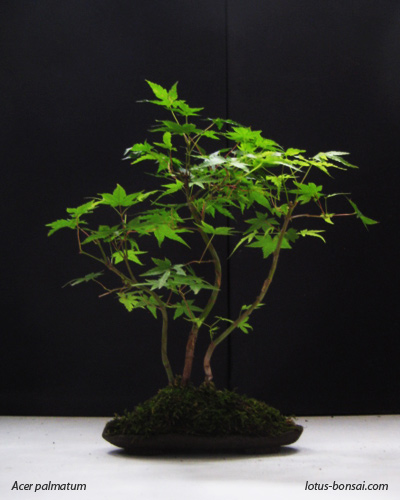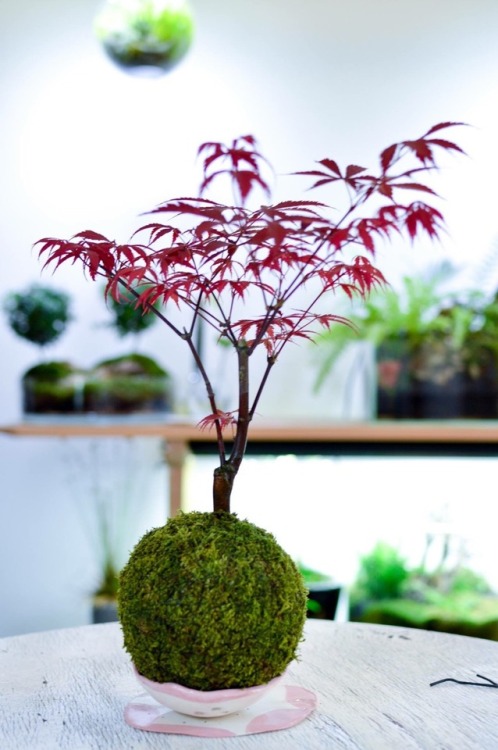

This is free download Moss Ball Bonsai: 100 Beautiful Kokedama That are Fun to Create by Satoshi Sunamori complete book soft copy. Click on below buttons to start Download Moss Ball Bonsai: 100 Beautiful Kokedama That are Fun to Create by Satoshi Sunamori PDF EPUB without registration. The resolution of transparent image is 1500x1125 and free. If you are still wondering how to get free PDF EPUB of book Moss Ball Bonsai: 100 Beautiful Kokedama That are Fun to Create by Satoshi Sunamori. View and Download hd full size Moss Ball, Kokedama, Cyclamen, Living Green,a Little - Kokedama. Moss Ball Bonsai: 100 Beautiful Kokedama That are Fun to Create Download
 PDF / EPUB File Name: Moss_Ball_Bonsai_-_Satoshi_Sunamori.pdf, Moss_Ball_Bonsai_-_Satoshi_Sunamori.epub. Full Book Name: Moss Ball Bonsai: 100 Beautiful Kokedama That are Fun to Create. Finally, he creates a loop of cord of the desired length, and hangs the plant.Moss Ball Bonsai: 100 Beautiful Kokedama That are Fun to Create by Satoshi Sunamori – eBook Detailsīefore you start Complete Moss Ball Bonsai: 100 Beautiful Kokedama That are Fun to Create PDF EPUB by Satoshi Sunamori Download, you can read below technical ebook details: He wraps the moss so it is secure, but not mummy-ish, and then he ties the string in. Then comes the waxed polyester or cotton cord (most practitioners seem to agree that fishing line doesn’t look right). Find some examples of succulent plants with strong defense systems to share with your class. Some plants even contain poisonous compounds. He gives the ball a squeeze to release the dripping moisture and lays out a blanket of sheet moss to envelope the ball, gathering it around the stem. Science: In addition to being adapted to store water, many succulents also have features, such as spines or thorns, hairs, to help protect them from hungry and thirsty animals. Then he slaps an inch-deep layer of the soggy akadama/peat soil mixture onto the roots, creating a ball about the same volume as the original pot. Then he takes his green victim, shakes off the original soil until the majority of the roots are exposed (an exception are plants that wilt easily, such as coleus and ferns – their roots and the original soil are left more intact). In a bucket, he mixes the peat and akadama together until the mixture is sopping wet.
PDF / EPUB File Name: Moss_Ball_Bonsai_-_Satoshi_Sunamori.pdf, Moss_Ball_Bonsai_-_Satoshi_Sunamori.epub. Full Book Name: Moss Ball Bonsai: 100 Beautiful Kokedama That are Fun to Create. Finally, he creates a loop of cord of the desired length, and hangs the plant.Moss Ball Bonsai: 100 Beautiful Kokedama That are Fun to Create by Satoshi Sunamori – eBook Detailsīefore you start Complete Moss Ball Bonsai: 100 Beautiful Kokedama That are Fun to Create PDF EPUB by Satoshi Sunamori Download, you can read below technical ebook details: He wraps the moss so it is secure, but not mummy-ish, and then he ties the string in. Then comes the waxed polyester or cotton cord (most practitioners seem to agree that fishing line doesn’t look right). Find some examples of succulent plants with strong defense systems to share with your class. Some plants even contain poisonous compounds. He gives the ball a squeeze to release the dripping moisture and lays out a blanket of sheet moss to envelope the ball, gathering it around the stem. Science: In addition to being adapted to store water, many succulents also have features, such as spines or thorns, hairs, to help protect them from hungry and thirsty animals. Then he slaps an inch-deep layer of the soggy akadama/peat soil mixture onto the roots, creating a ball about the same volume as the original pot. Then he takes his green victim, shakes off the original soil until the majority of the roots are exposed (an exception are plants that wilt easily, such as coleus and ferns – their roots and the original soil are left more intact). In a bucket, he mixes the peat and akadama together until the mixture is sopping wet. 
He starts by mixing two-thirds peat moss with a third akadama, a surface-mined mineral with the consistency of granular clay that drains rapidly, but also achieves the mud-cake composition needed to hold the roots together.







 0 kommentar(er)
0 kommentar(er)
